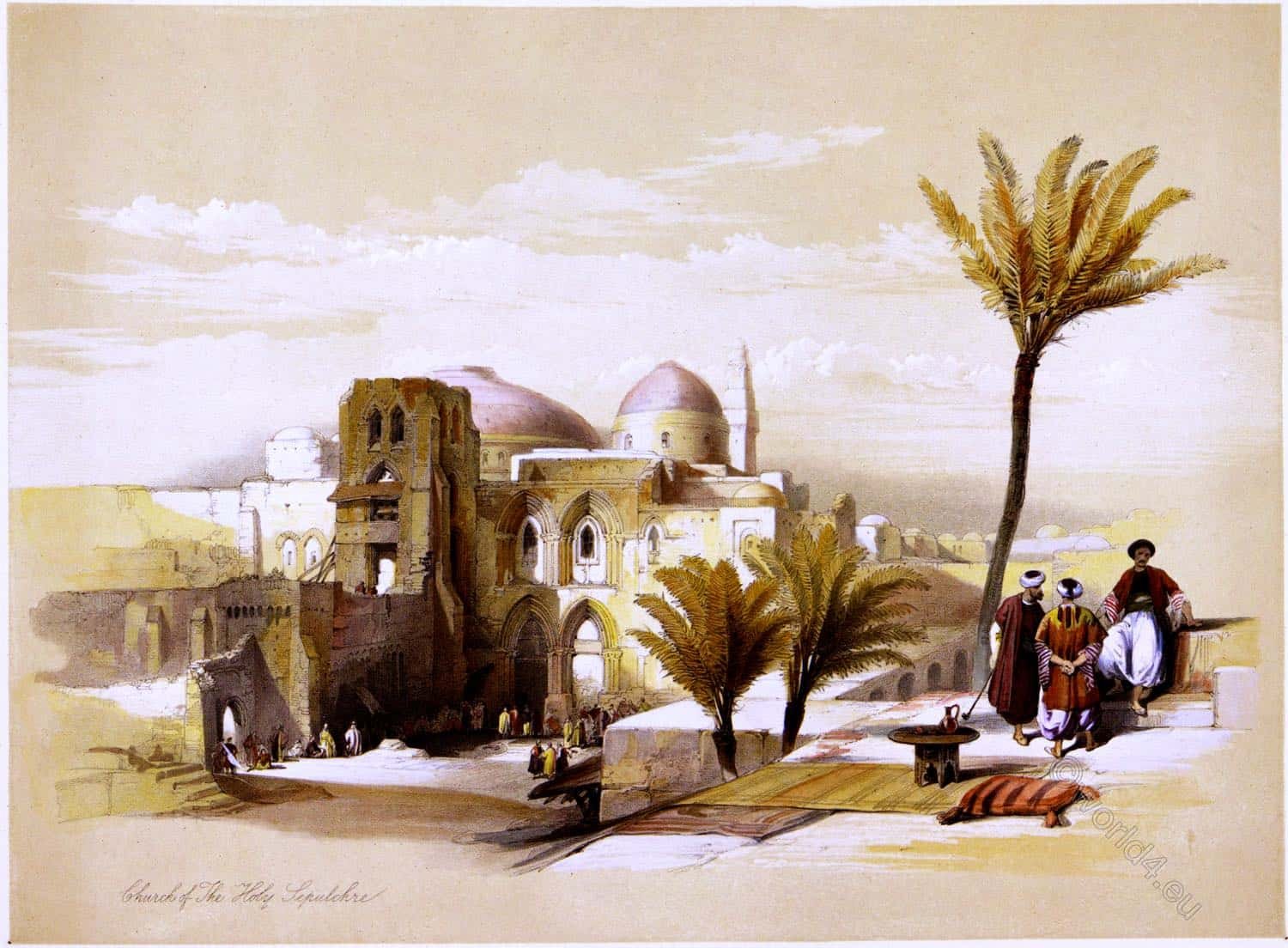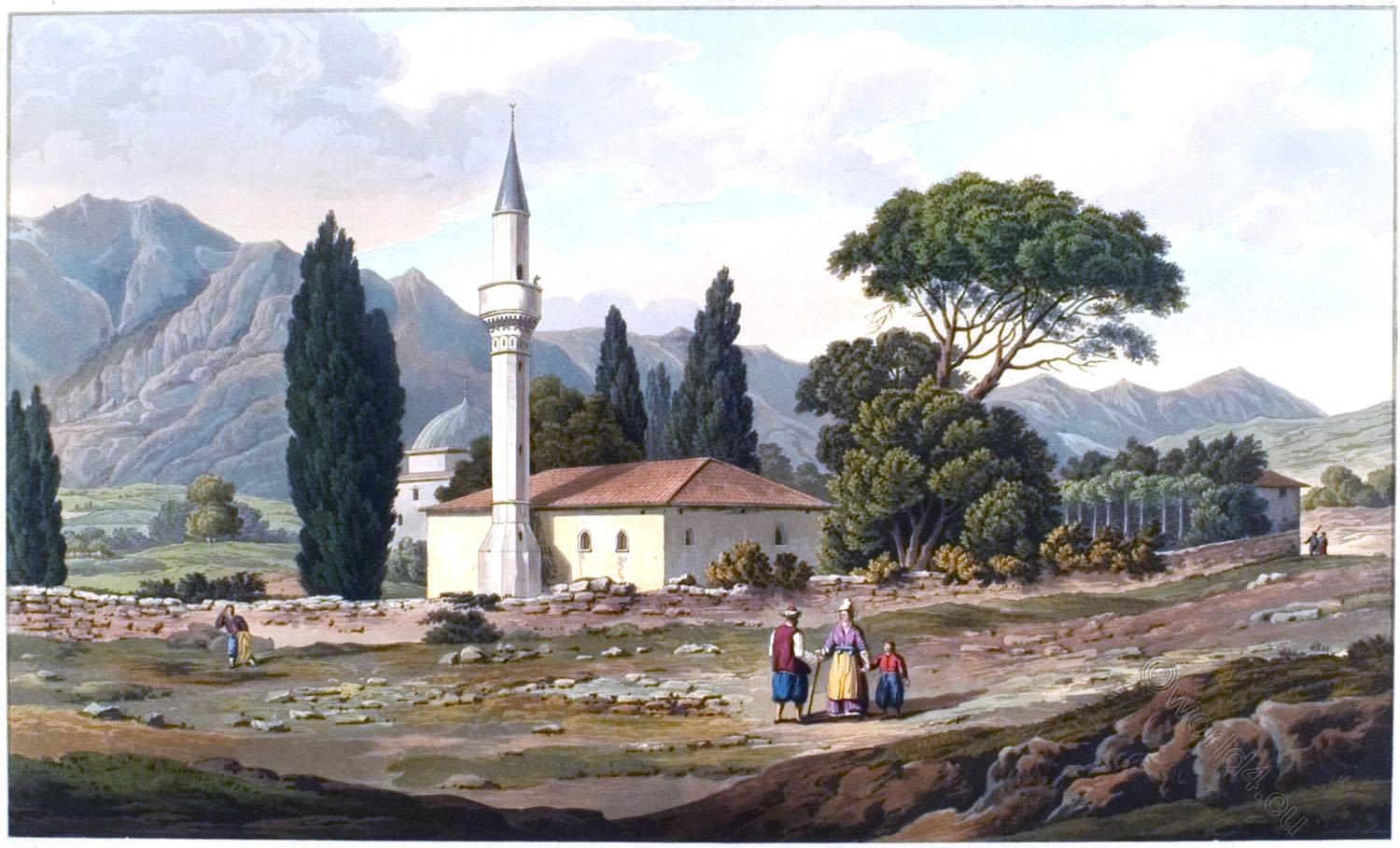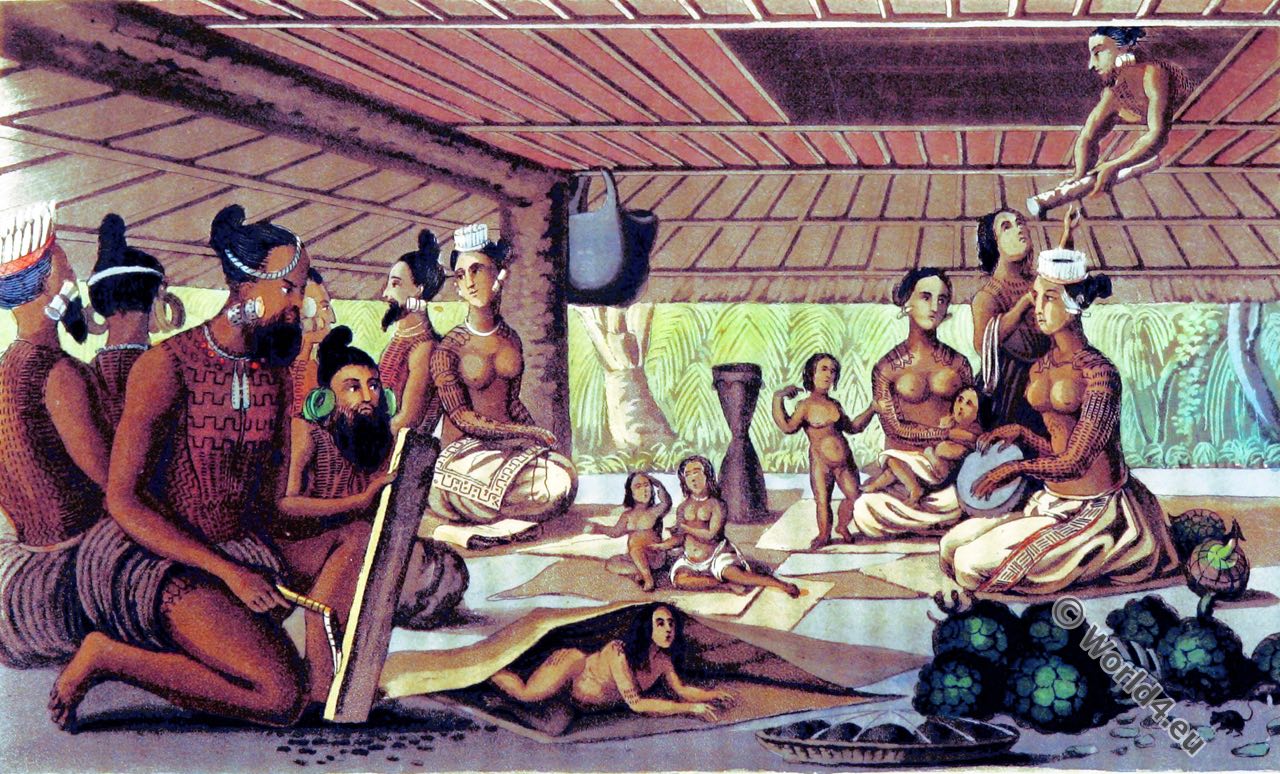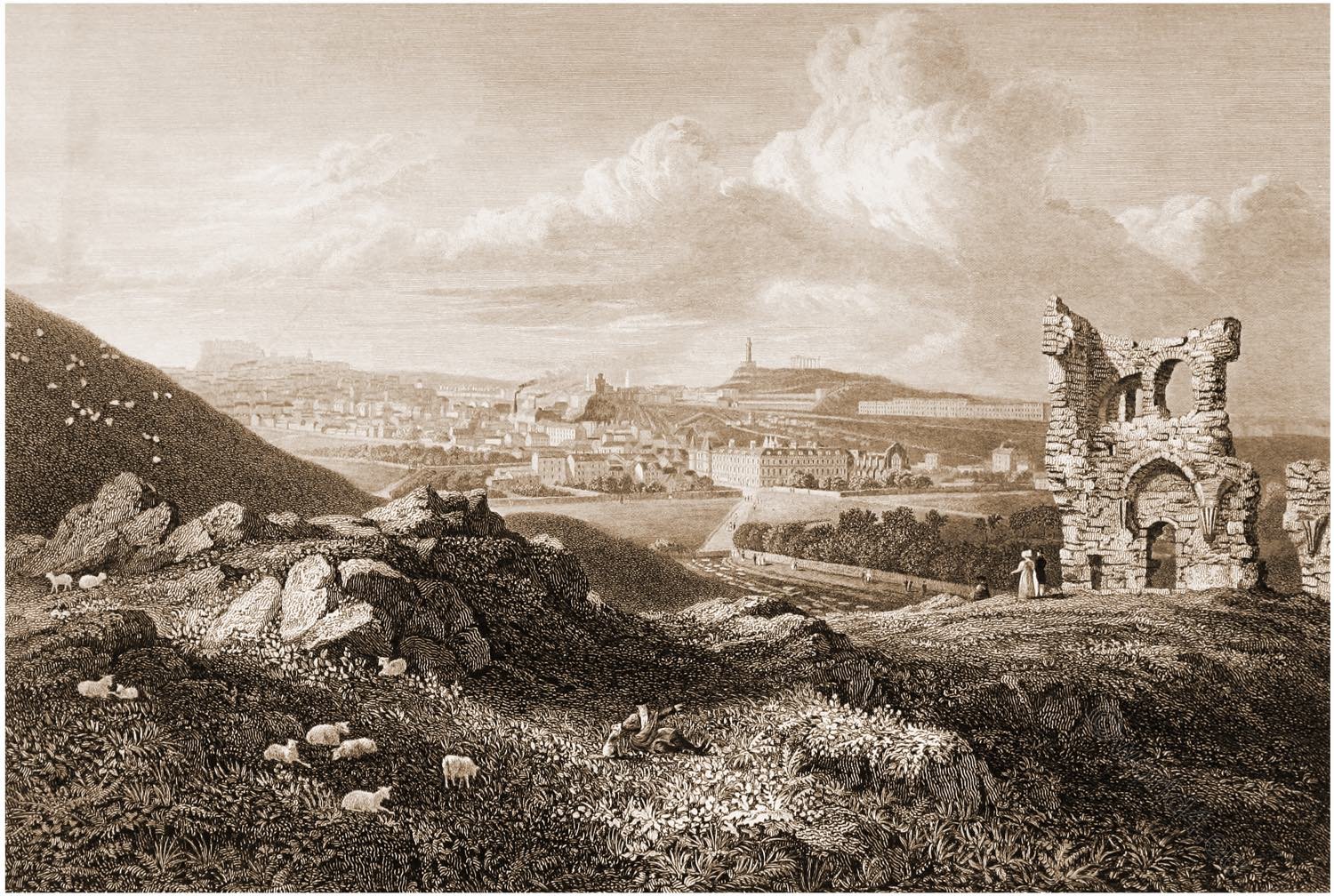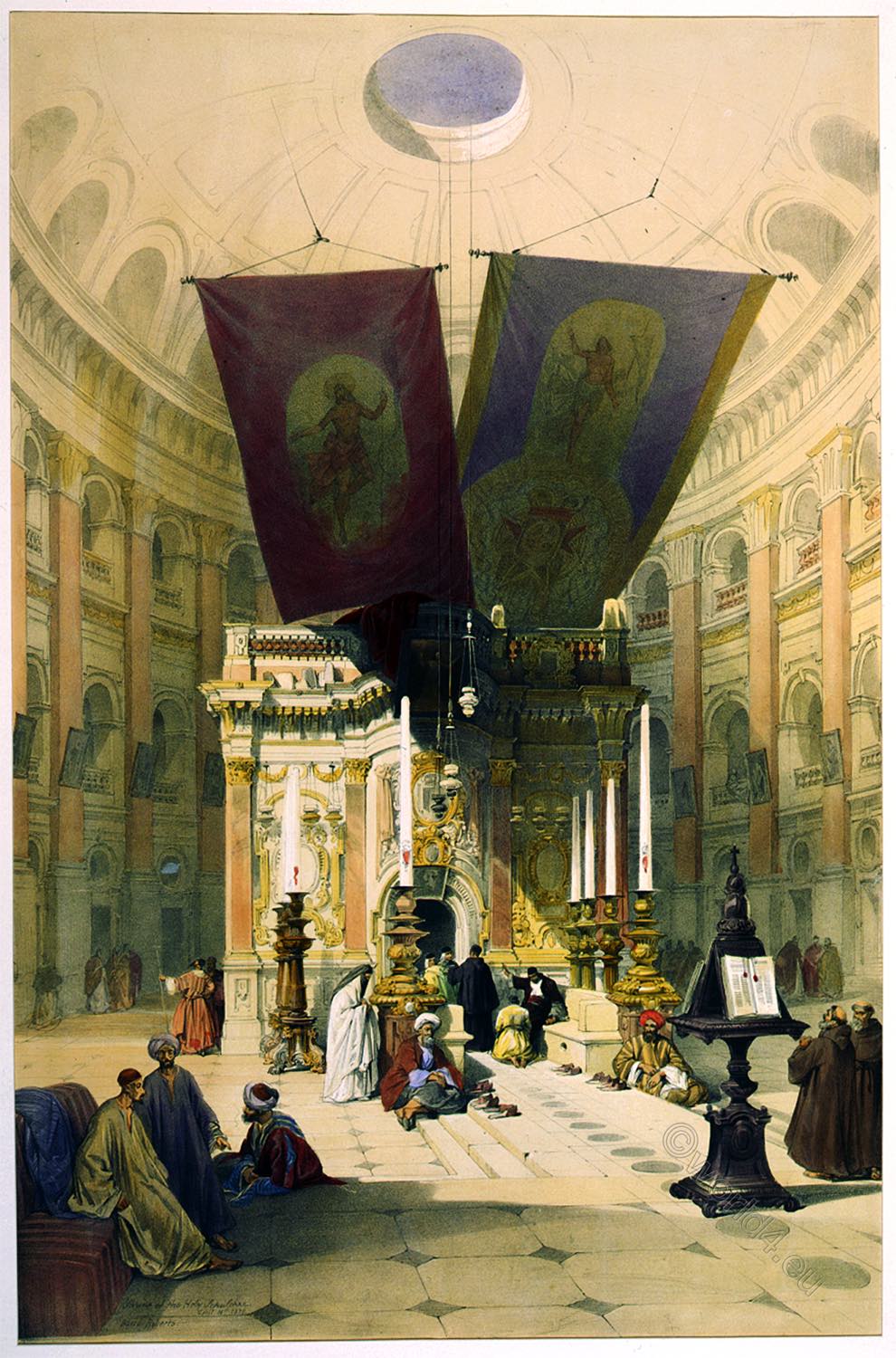The Chapel of St Helena is a 12th-century Armenian church in the lower level of the Church of the Holy Sepulchre in Jerusalem, built during the Kingdom of Jerusalem.
There are two apses in the church, one dedicated to St Helen and one to the penitent thief on the cross.
In the south-eastern part of the chapel there is a chair that according to tradition was used by Helena, the mother of Emperor Constantine, when she was searching for the True Cross.
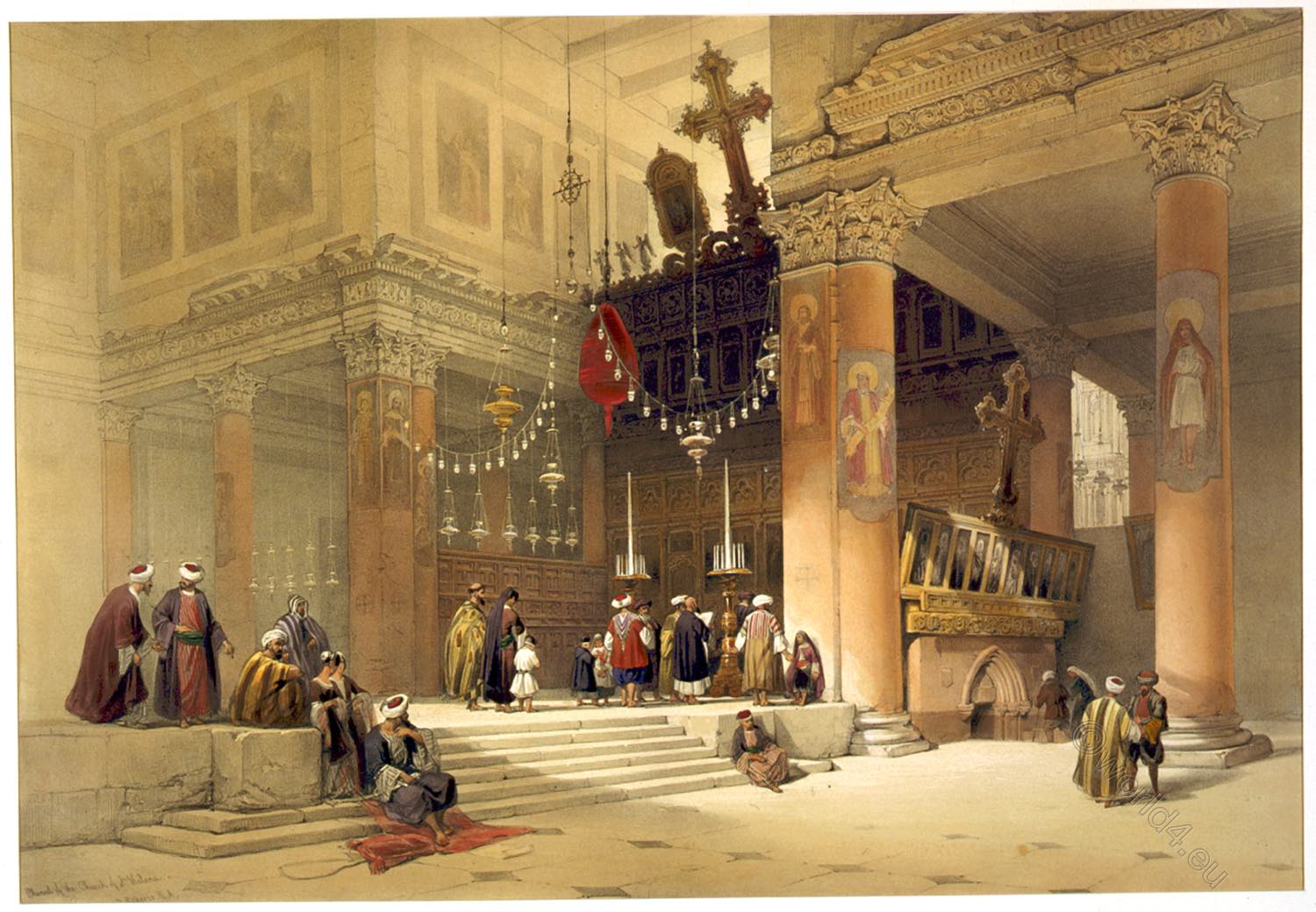
THE CHAPEL OF ST. HELENA.
by David Roberts
The discovery of the Cross on which our Lord died, was one of the most memorable exploits of the mother of Constantine. From the Greek Chapel in the Great Church of the Holy Sepulchre, by thirty broad marble steps, a large underground chamber is reached, its roof supported by four short columns, and dimly lighted.
In front of those steps is an altar, and, on one side, the seat on which St. Helena, instructed by a dream where the true Cross was hidden, sat and watched while the progress of discovery was going on. Fourteen steps deeper is another chamber, still more dimly lighted, and in its centre a marble slab, covering the pit where, deeper yet, the mysterious object of search was at last found.
But humiliating as are those legendary absurdities, the scenes which take place in connexion with them are not less humiliating. An intelligent traveller 1) supplies us with the substance of the following exhibition at the Holy Sepulchre (1821). The 21st of April is called the Day of Charity.
The 21st of April is called the Day of Charity. By ten in the morning, an immense crowd were collected at the Church and round the Chapel of the Holy Sepulchre. In this assemblage was to be recognized every description of Christian Europe, with Copts, Maronites, Armenians, Syrian Arabs, &c. Their object was to see the kindling of the sacred fire in imitation of that which descended at the prayer of Elijah.
“During the period when the miracle was preparing within the Shrine, what were the crowd doing? They selected this interval for performances worthy of an Italian Carnival. They ran and dragged each other round the Church, they mounted on each other’s shoulders, they built themselves up into pyramids, they tumbled like mountebanks.
The shouts and shrieks from so many voices,insomany languages, sharpened with oriental shrillness, were intolerable. The uproar was rendered more discordant by the violence of the Turkish soldiers in the attempt to trancruillise fanaticism by blows.”
Two priests, a Greek and an Armenian, next entered the Shrine, and the door was closed after them and guarded by a body of soldiers. The crowd now rushed towards the walls of the Shrine, every one with a torch or taper ready to be lighted by the miraculous flame.
But the miracle was delayed until the arrival of the Turkish governor. The gallery overlooking this ceremonial was filled by various groups; Turks, who laughed at it Armenians, who believed in the miracle; Latins, who might be sceptical or not, as they pleased; and English, who naturally looked upon it with mingled feelings of contempt and compassion.
At length the governor arrived, and the miracle had permission to display itself. Every light was put out, and the multitude were left in almost total darkness; but after some moments of anxiety a glimmer was seen through the orifices in the Shrine, it increased to a flame, and the multitude burst into a general exclamation. All now was enthusiasm, delight, and not a little danger.
For the zealots fought fiercely for the honor of lighting their torches and tapers at the flame itself; but those who were not fortunate enough to reach it, took it from others, and, in a few minutes, the whole area was a blaze of thousands of lights.
The two priests again made their appearance, each waving a torch of “celestial flame,” and with those in their hands, they were hoisted on the shoulders of the devotees, and carried in triumph out of the Church.
When the display has been thus gone through, the crowd slowly retire, preserving the remainder of their tapers to melt them on strips of linen, which they intend to be sewed into their winding-sheets, as sure passports to Paradise. The whole performance, monstrous as it is, has been authenticated by every European writer who has been present during the Easter celebrations.
To us, even its extravagances may furnish the important lesson of the general and dangerous tendency of human nature to superstition; of the strange facility with which minds, even acute and intelligent on other subjects, may abandon themselves to the grossest follies in religion; and of the wisdom of limiting our zeal to the simplicity of Scripture.
1) The Rev. G. Waddington: “Condition of the Greek Church.”
Haghe, Louis, 1806-1885, lithographer
Roberts, David, 1796-1864, artist
published 1843
Source: The Holy Land, Syria, Idumea, Arabia, Egypt, & Nubia, by David Roberts, George Croly, William Brockedon. London: Lithographed, printed and published by Day & Son, lithographers to the Queen. Cate Street, Lincoln’s Inn Fields, 1855.
Related
Discover more from World4 Costume Culture History
Subscribe to get the latest posts sent to your email.

